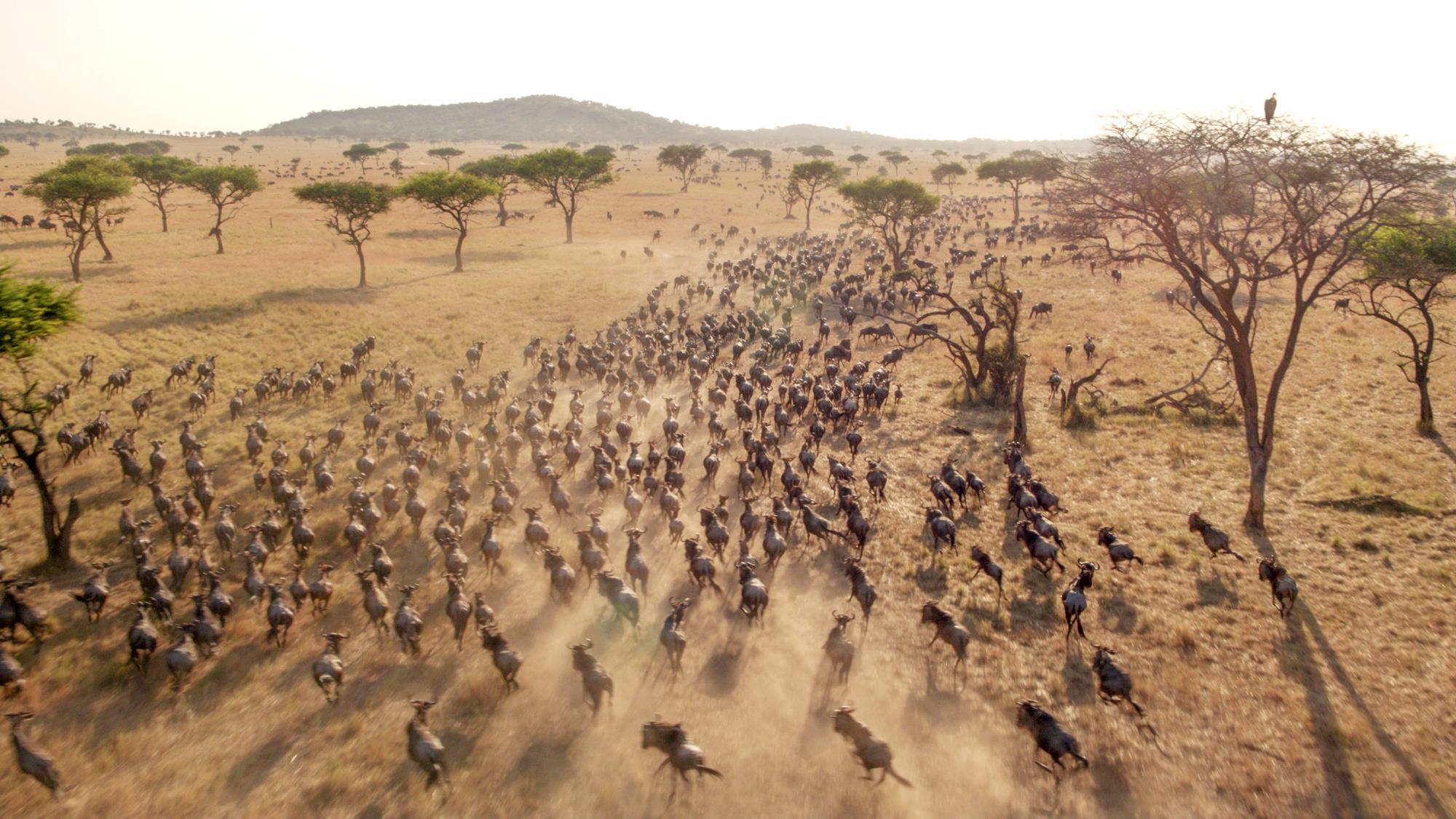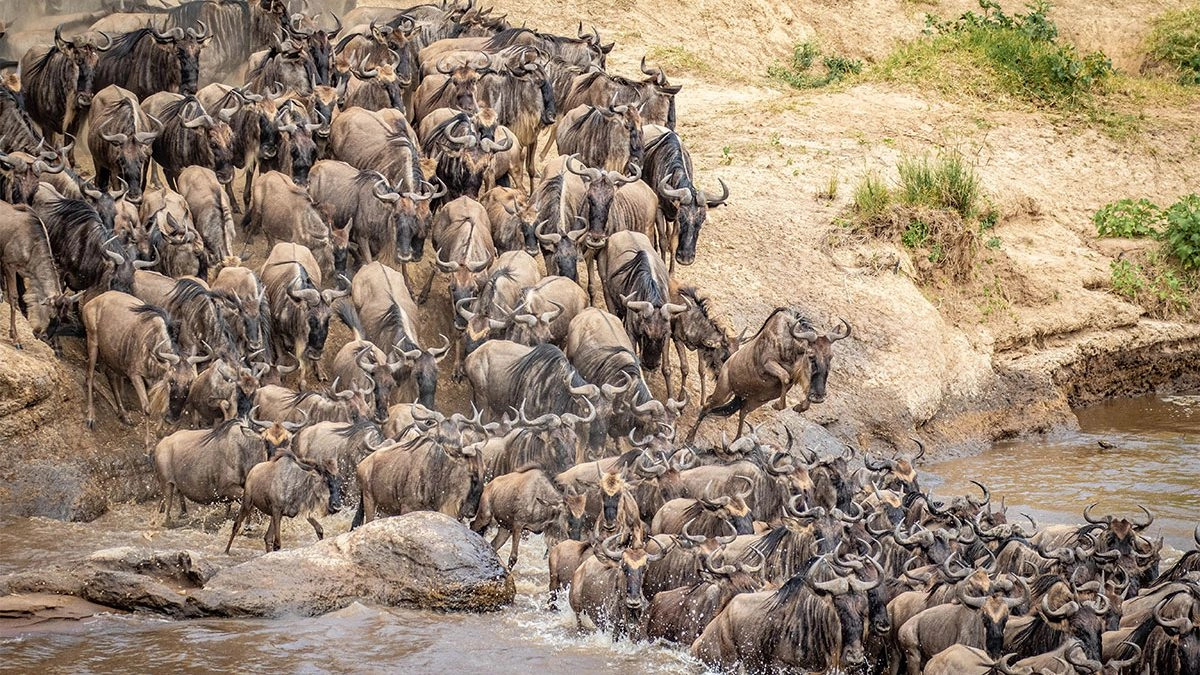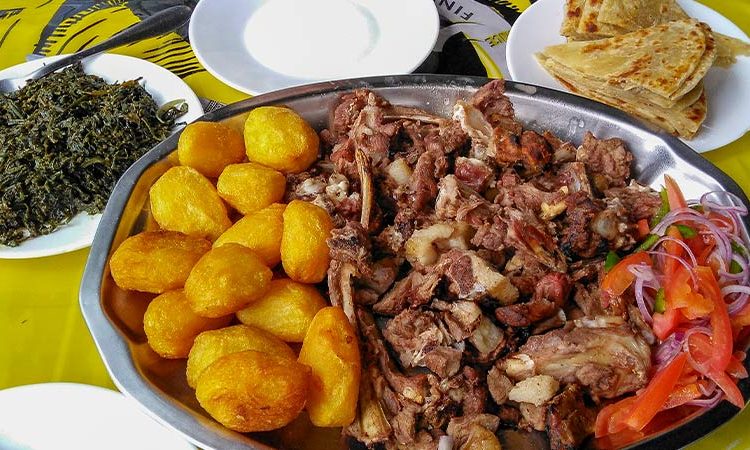- GET IN TOUCH WITH US:
- +256 753518160
- +256 777842166
- info@experiyatourcompany.com

When is the Great Migration in Kenya?
November 17, 2025
What’s the best time to visit Maasai Mara?
November 17, 2025How Long Does the Great Migration Last?
The Great Migration is one of the most awe-inspiring wildlife events on Earth, a continuous cycle of movement that spans thousands of kilometers across the Serengeti–Mara ecosystem in Tanzania and Kenya. It is not just a single moment in time or a brief migration season; it is an ongoing, year-round journey that shapes the rhythm of life for more than 1.5 million wildebeest, hundreds of thousands of zebras, and countless gazelles. Many travelers planning a safari to witness this spectacle often wonder how long the Great Migration lasts. The answer is that the Great Migration is a full-time, year-long process—365 days of movement, survival, birth, and dramatic natural interactions.
To understand the duration and nature of this phenomenon, it helps to explore the stages of the migration as it unfolds month by month. Each phase reveals a new aspect of the cycle, making the Great Migration not just a single event but a continuously evolving journey that never truly ends.
The Great Migration: A Continuous Natural Cycle
The Great Migration operates like a circular pathway with no real starting or ending point. The herds move throughout the year in search of fresh grass and water, guided by rainfall patterns and seasonal ecological changes. Unlike many migrations that happen once annually, the Great Migration is always in motion. The journey does not stop. The animals never stay in one place for too long, and by the time they complete one loop of the ecosystem, the next cycle begins immediately.
This perpetual motion is what makes the Great Migration so fascinating—and why timing your safari depends on which stage of the migration you want to experience. From birthing seasons to dramatic river crossings, every month holds a different chapter of this remarkable story.
January to March: The Calving Season in Southern Serengeti
The year begins in the nutrient-rich plains of southern Serengeti, where the herds gather in massive numbers. Here, the short rains bring fresh, sodium-rich grasses that support one of the most dramatic events of the migration: the calving season.
From late January through March, nearly half a million baby wildebeest are born. At the peak, around 8,000 calves may be born each day. The presence of so many newborns attracts high predator activity. Lions, hyenas, leopards, and cheetahs flock to the plains, creating intense predator-prey interactions.
Although calving season is peaceful in appearance—with vast herds spread across green plains—this is also a dangerous time. Newborns must quickly learn to stand, walk, and run to survive.
This period marks the beginning of the yearly migration cycle, although the animals were already on the move before this phase.
April to June: The Long March North
As the rains diminish and the plains dry out, the herds begin their long journey northward. From April to June, the migration stretches out in long lines, creating some of the most powerful images of the event—the endless march of wildebeest thundering across open landscapes.
During these months, the herds travel through the central and western Serengeti. The grass is taller here, offering more cover for predators, and the journey becomes more challenging. Thunderstorms follow sporadically, and the animals track these rainfall patterns instinctively.
Many travelers don’t realize that this long journey is one of the most important stages of the migration. It is during this period that the herds build the strength needed for the dramatic river crossings to come.
July to October: The Maasai Mara and the Famous River Crossings
One of the most iconic and internationally recognized moments of the Great Migration happens between July and October, when the herds reach the northern Serengeti and begin crossing into Kenya’s Maasai Mara.
This is the time of the legendary Mara River crossings. Thousands of wildebeest gather on cliffs and dusty banks, nervously scanning the waters for crocodiles. For hours, they may stand motionless before one brave animal suddenly leaps, triggering a mass plunge into the swirling river below.
These river crossings are among the most dramatic wildlife spectacles in the world. The combination of strong currents, steep embankments, enormous crocodiles, and the sheer density of animals creates an unforgettable scene.
This phase of the migration continues through August and September, with herds spreading throughout the Maasai Mara, grazing on its rich grasslands and attracting high predator activity. Even in October, depending on rainfall patterns, river crossings may still occur as the animals gradually begin moving south again.
November to December: The Return South to Tanzania
As the rains return to the Serengeti, the herds begin their southward journey. They move from the Maasai Mara back toward the eastern and southern plains of the Serengeti.
November marks the short rains, bringing new green pastures that encourage the herds to migrate south. By December, many animals are returning to the Ndutu region of the southern Serengeti, setting the stage for the next calving season in early January.
This southward journey completes the full loop of the Great Migration. And just like that—without pause—the cycle begins again.
So, How Long Does the Great Migration Last?
The Great Migration lasts all year. It is a continuous loop, a never-ending cycle of movement dictated by nature. While many travelers associate the migration only with river crossings, the truth is that each phase is equally meaningful, and each offers different experiences:
The calving season offers intense predator action.
The long marches offer dramatic landscapes and massive herds.
The river crossings offer heart-stopping drama and spectacular visuals.
The southward return showcases the rhythm of nature at work.
Because the Great Migration never stops, travelers can witness a part of it at any time of year. The key is understanding the timing and aligning your safari with the stage you most wish to experience.
Why Understanding Duration Matters for Safari Planning
Knowing that the Great Migration is year-round helps travelers choose the right time to visit based on their expectations. For instance:
If you want to see the famous Mara River crossings, July to October is ideal.
If your interest is birthing and predator action, January to March is best.
For fewer crowds and beautiful green landscapes, April to June is rewarding.
For peaceful plains and migrating herds, November and December provide excellent viewing.
Because the migration’s timing depends heavily on rainfall, working with an experienced operator is crucial. Professionals track animal movements daily and help travelers position themselves for the best possible sightings.
A Natural Phenomenon of Extraordinary Scale
The full loop of the Great Migration covers roughly 800 to 1,000 kilometers annually. The sheer scale of movement, the massive number of animals involved, and the dramatic interplay of life and survival make it the largest land-based mammal migration in the world.
Every moment—whether it’s a newborn wildebeest taking its first steps, a predator stalking through the grass, or a herd plunging into river waters—adds to the magnificence of this ecosystem. Understanding that the migration lasts all year enriches the experience and shows just how complex and beautiful this natural process is.
Book Your Great Migration Safari with Experiya Tour Company
Experiencing the Great Migration is one of the most extraordinary adventures a traveler can undertake. Whether you dream of witnessing the famous Mara River crossings, exploring the calving grounds of southern Serengeti, or following the herds through the rolling plains, the journey is best undertaken with knowledgeable experts who understand the migration’s rhythm.
Experiya Tour Company specializes in crafting perfectly timed migration safaris, offering expert guides, handpicked lodges, seamless logistics, and personalized itineraries. Their deep understanding of wildlife movements ensures that you are always in the right place at the right moment.
For a remarkable journey into the heart of nature’s greatest spectacle, book your safari with Experiya Tour Company and witness the Great Migration in all its unforgettable glory.




